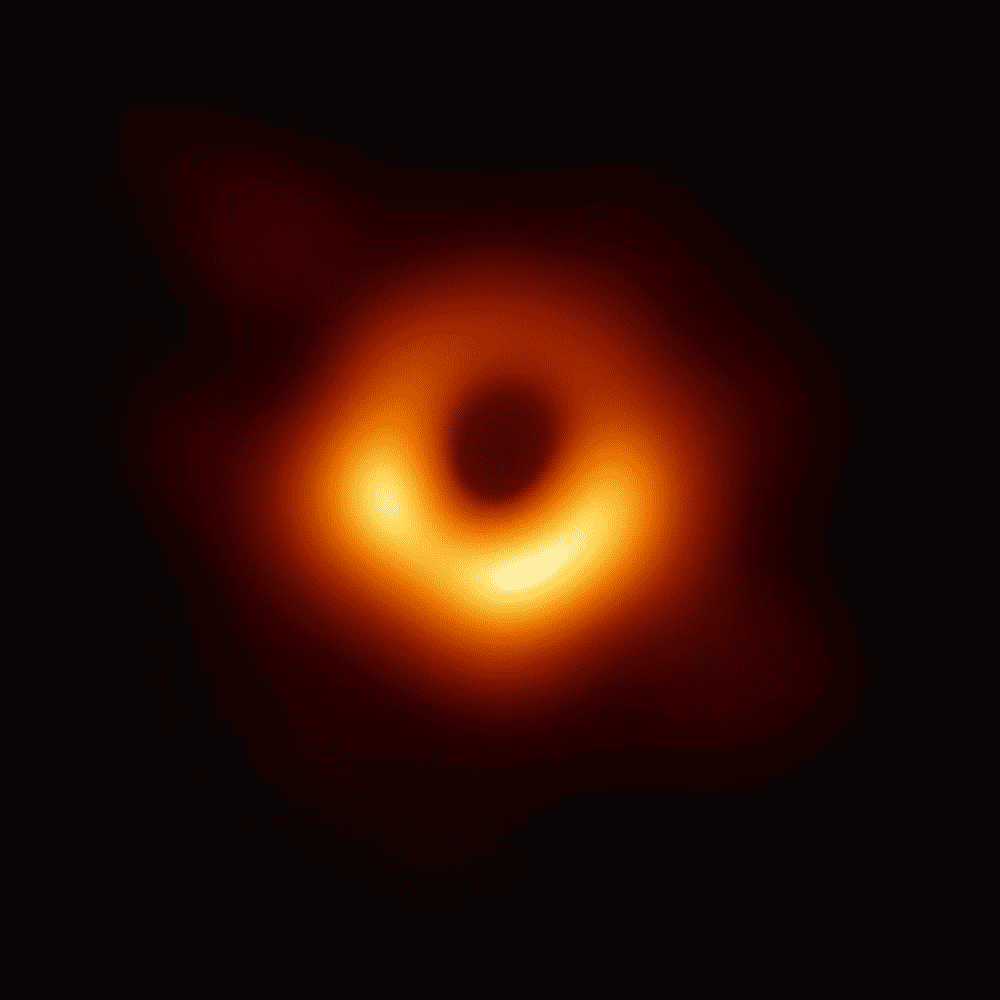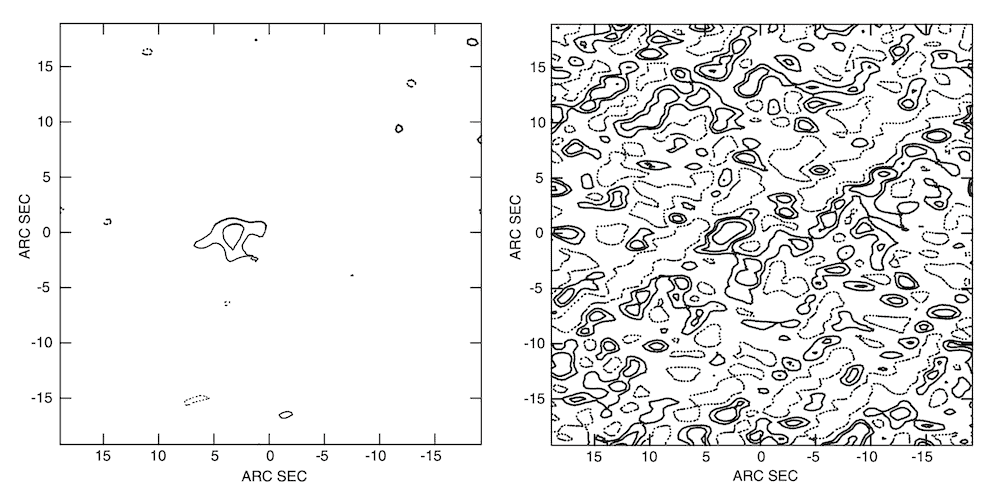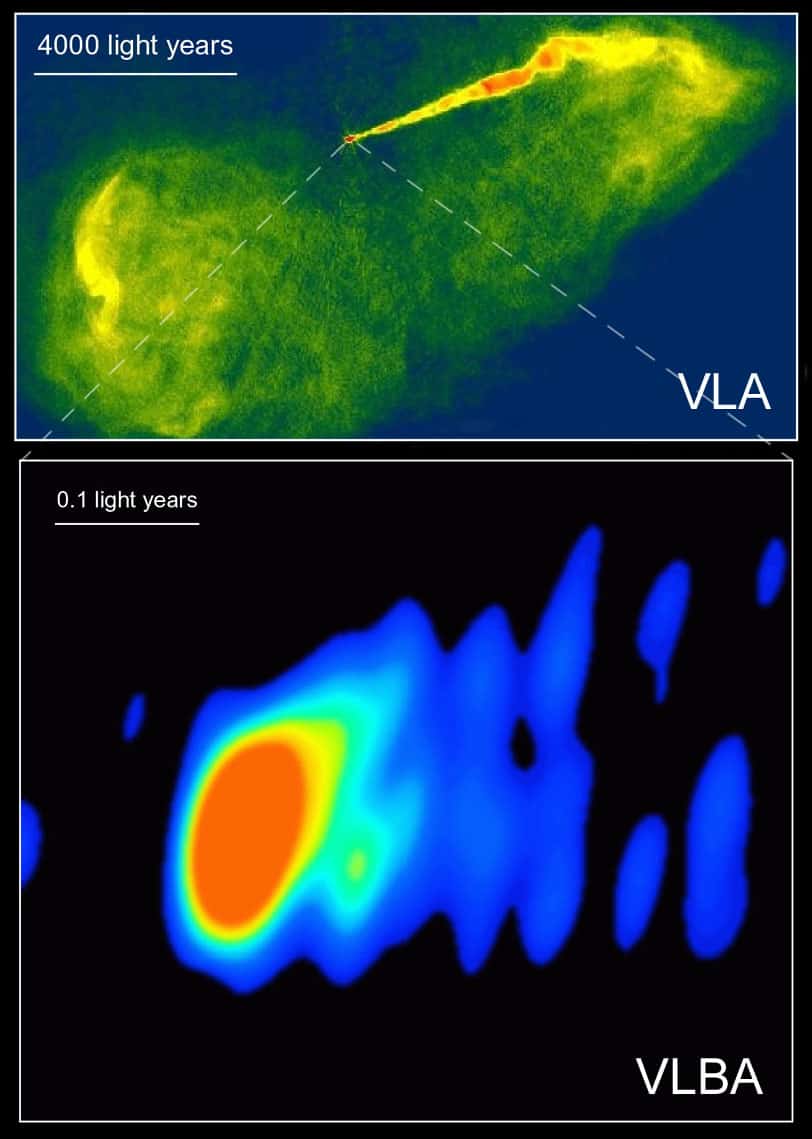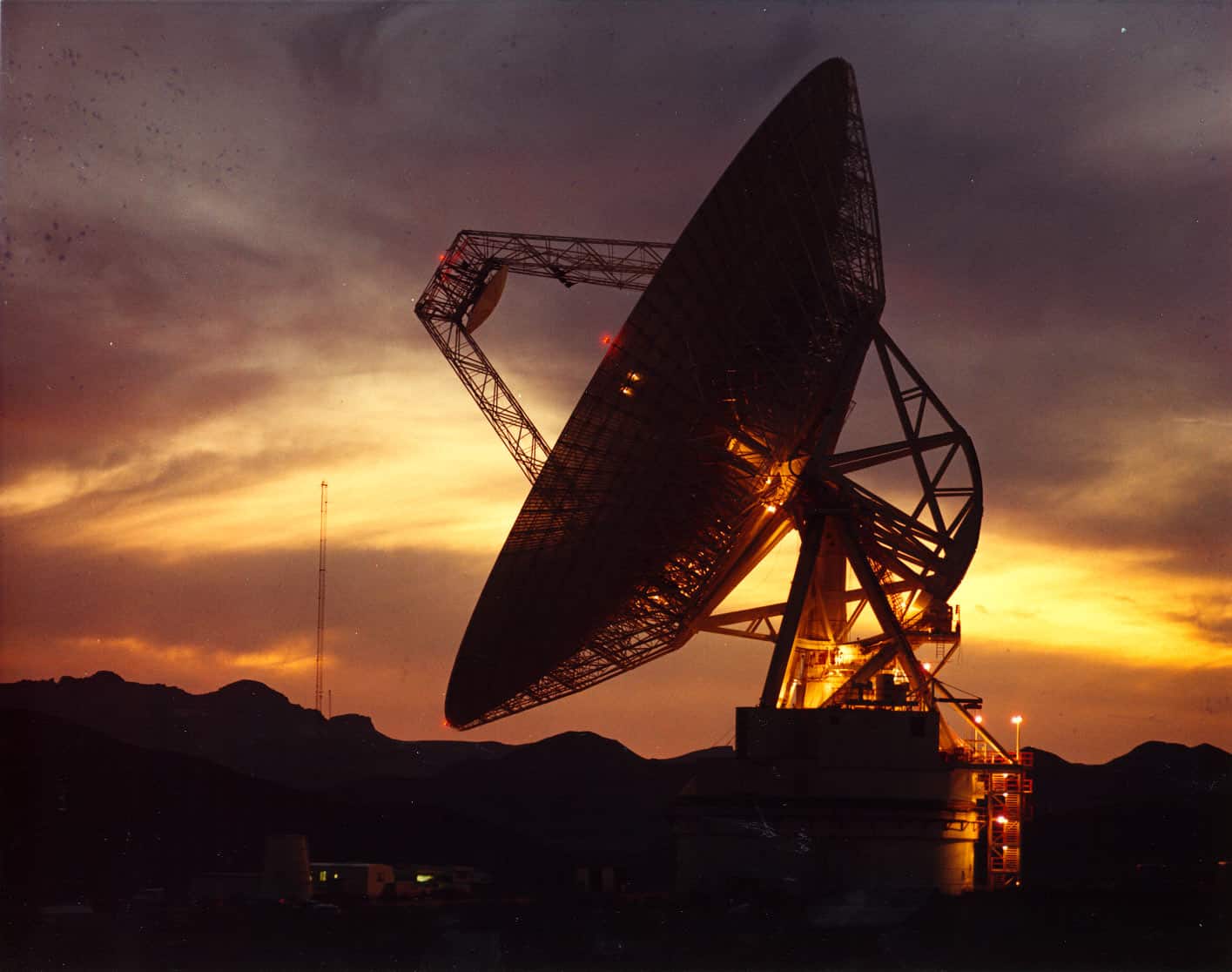Picture yourself in a dark room. After a few moments, your eyes start to get accustomed to the darkness. Now suddenly, someone lights a lantern in your eyes. Everything’s bright and you can’t see anything anymore.
That’s how it feels for a radio antenna when a satellite passes by, says Federico Di Vruno the Spectrum Manager at the SKA Observatory and one of two Co-Directors of the IAU Centre for the Protection of the Dark and Quiet Sky from Satellite Constellation Interference (IAU CPS).
“That’s the kind of situation that happens when you have really large antennas looking at the sky trying to receive these very faint signals that come from celestial sources. Suddenly, you have satellites crossing the field of view of your antenna, or you’re looking at satellites that are transmitting signals or radiating signals unintentionally. These signals can be picked up by our very large and very sensitive antennas. So right now we are looking at the sky with a lot of sensitivity and we see signals that are coming from satellites, and that’s making our job difficult.”
For astronomers, the problem of satellites in orbit is a relatively new one. Although we’ve been putting satellites into orbit for decades, in the past few years, the number has been skyrocketing. In the next few years, it’s projected to grow even more.
Currently, there are some 8,000 satellites in orbit. That’s a lot compared to how many there were only ten years ago. But it’s nothing compared to what will happen ten years from now. Estimates for the next 5-10 years forecast between 20,000 and 100,000 satellites. If the Earth’s near-orbit were a street, the traffic would be looking a bit heavy right now. But it’s about to be a constant traffic jam soon.
This is a problem for many reasons, but it’s particularly pressing for radio astronomers.
Radio astronomy and telescopes

Satellites also affect optical astronomy, and can even interfere with our search for dangerous asteroids. However, radio astronomy is typically the most affected by satellites.
Astronomers use different wavelengths of light to study the universe. In optical astronomy, which uses the visible range of light, there are lower wavelengths like X-rays or gamma rays, and there are the higher wavelength radio waves.
Radio telescopes detect and amplify radio waves from space. These signals are very weak so radio telescopes have to amplify the signal greatly. This is why it’s a bit like getting accustomed to a dark room. Your eyes amplify the little amount of light that gets in by widening the pupils; radio telescopes amplify existing radio signals so they can study them in detail.
Not all radio telescopes are the same. Some of these radio telescopes are large dishes, while others look more like fences or metal framework scattered across the landscape. But the largest and most sensitive antennas are the most prone to sources of noise.
There are plenty of sources of noise here on Earth. In fact, radio astronomy has some dedicated frequencies, reserved for different types of scientific research — but there’s a catch.
“We are trying to detect signals that come from the cosmos, from different sources. The problem there is that you cannot control the frequency of these emissions. The emission just happens in different frequencies because of natural processes in the universe. So, you just need to go to the frequency where your phenomenon is happening.”

Radio astronomy normally tries to bypass noise by building telescopes as far away from civilization as possible. Take, for instance, the Square Kilometer Array Observatory (SKAO).
This huge project will provide the best radio astronomy resolution to date. It will be 50 times more sensitive than any other radio instrument that came before it. It can also scan much faster than any of our existing radio telescopes. But in order for this to work, the sites have to be built in unpopulated areas that have very low levels of man-made radio interference. The array will have two core sites, one in Australia, and one in South Africa, but both are in very remote areas. The national legislation in these countries also protects more frequency bands for astronomy.
But with satellites, it’s different.
Satellites are not affected by these national legislations, and they can affect radio observations. They can do this in multiple ways. Sometimes, the frequency band that the satellite uses is close to the band reserved for radio astronomy. This is typically the kind of discussion that regulators think about because signals can “leak” radiation into the adjacent band.
The other problem is the sheer number of satellites.
It’s getting crowded
Until recently, satellites weren’t a big concern for radio astronomy. Many satellites were geostationary and you could just avoid them, Di Vruno says. But low-orbit satellites just move around all the time — and there are way more satellites than there used to be.
“There are so many of them. Maybe not even so many right now, but the prospects are very big. We see all these filings and people are talking about 100,000 satellites or more, which is a lot. Right now there are about eight 8,000 satellites in low Earth orbit,” the researcher mentions.
“What we can definitely say is that making radio observations in the frequency range that is assigned to these constellations is going to be very difficult, it’s going to be very challenging that for sure,” Di Vruno says.
This makes the numbers game worse for astronomers. Until recently, the odds of having a satellite in the main field of view of a radio antenna were low. But the more satellites that get put into orbit, the higher the risks of ruining astronomical observations.
Think of it this way: each of the satellites owns a slice of the frequency cake. The slice is meant to be thin but if the satellite signal is intense, it can take a little bit of the next closest slice too. Satellite companies are generally receptive to the astronomers’ concerns, the researcher says, but they are incentivized to follow their main business objective. This leads to a tug-of-war game that will hopefully lead to a balance where satellite companies can do their job without severely restricting astronomers’ ability to study the night sky.

Di Vruno and other researchers are trying to figure out just how big of a problem these projected satellites are going to be, so they’re creating models based on existing satellites. But it’s not clear if the new satellites will be like the ones we have now. This makes it more difficult to estimate the impact of newly launched satellites.
There’s another problem that stems from this: unintended radiation.
Recently, Di Vruno and colleagues published one notable study that got widespread media attention. The researchers worked with SpaceX to characterize the radiation “leakage” of some SpaceX satellites. By “leakage”, we mean radiation that is outside of the intended frequency range for communication. The researchers found significant unintentional radiation that can be obtrusive for radio astronomers.
It’s not something that is limited to SpaceX — it’s very reasonable to expect different satellites from different companies to produce similar results. In fact, Di Vruno mentions, the relationship astronomers have with SpaceX is leading to productive discussions about addressing these concerns.
But nonetheless, the fact remains that satellites can interfere with radio observations.
“It’s difficult to say that all the satellites look the same, it’s difficult to say that their radiation characteristics are the same from any angle you look at the satellite. Those are tricky conversations and limitations. But what we have proven is that if you look in the sky and you see a satellite going by, with a sensitive radio telescope, in low frequencies in VHF frequencies, you can see the emissions.”
Still a new problem — but we can’t wait
Until recently, this was a problem most astronomers didn’t even consider. But the almost exponential increase in the number of satellites in space has pushed the issue higher up the agenda.

Some mitigation strategies do exist. For instance, there could be some frequency coordination between the telescopes and the operators. In a lecture at the 2023 European Astronomical Society (EAS) meeting in Krakow, Di Vruno mentioned this as a potential approach. In this approach, operators would temporarily relinquish a part of their frequency while astronomical observations are made. After the observations are done, the operators can resume normal activity.
This is feasible, but it requires coordination between the astronomers and the satellite operator, and it’s bound to be challenging.
Even if something like this is done, it’s going to take more resources to achieve the same results. Essentially, because of satellites, performing some scientific observations is becoming more expensive, and this extra expense is not currently accounted for.
In order to use telescopes to study the effect of satellites, astronomers book satellite time. Di Vruno and colleagues have also booked more telescope time to study the effects of satellites on radio astronomy, looking not only at Starlink satellites but also at other constellations. This also consumes time and resources, but it’s essential to understand these effects as early as possible and mitigate them as early as possible — before throngs of new satellites are sent into orbit.
Another important aspect is for astronomers to make their voices heard early on. That’s why the International Astronomical Union’s Centre for the Protection of the Dark and Quiet Sky from Satellite Constellation Interference was founded. The IAU CPS, as the initiative is called, embraces the principle of a “dark and quiet sky,” not just for a better understanding of the universe we live in, but also for the “cultural heritage of humanity and for the protection of nocturnal wildlife.”
It’s hard to gauge just how big of a problem satellites will be for astronomers because as Di Vruno points out, it’s only been thoroughly studied recently.
The IAU CPS intends to stand as a unified, coherent voice for the astronomical community. It’s not just astronomers — the group involves satellite operators, policymakers, and even members of the wider community. But finding a balance won’t be easy. Satellites offer clear advantages in terms of connectivity, and their number seems likely to continue growing quickly.
Despite the challenges, researchers are optimistic. Federico Di Vruno and the IAU CPS are tirelessly working to find this balance. The dialogue between astronomers and satellite companies is ongoing, and there is also potential for regulation.
Much like the adaptation process in a dark room, science too, has the ability to find its way around new obstacles. As daunting as the challenges might seem, the resolve of the scientific community is plain to see — and it’s hard to imagine it going unanswered. After all, as the Greek philosopher Plato once said “Astronomy compels the soul to look upwards and leads us from this world to another.” What civilization would close its own window for astronomy?







